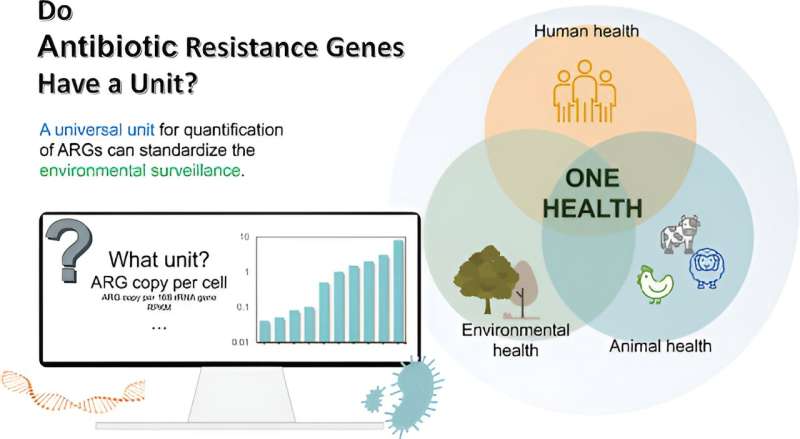This article has been reviewed according to Science X's editorial process and policies. Editors have highlighted the following attributes while ensuring the content's credibility:
fact-checked
peer-reviewed publication
trusted source
proofread
Quantifying antibiotic resistance genes in environmental samples

Antimicrobial resistance (AMR) is one of the most pressing challenges of the 21st century. To address this issue, the "One Health" concept, which encompasses human, animal, and environmental health, has become a widely adopted framework for research, regulation, and mitigation efforts.
The Quadripartite, a joint organization comprising the World Health Organization (WHO), Food and Agriculture Organization of the United Nations (FAO), World Organization for Animal Health (WOAH), and UN Environment Program (UNEP), has released a research agenda aimed at preventing and mitigating antimicrobial resistance (AMR) in humans, animals, agriculture, and the environment across five themes: transmission, integrated surveillance, interventions, behavioral insights and change, and economics and policy.
Recently, the research team at the Center for Environmental Engineering Research, led by Professor Tong Zhang, Chair Professor (Water and Environmental Engineering) at the Department of Civil Engineering at the University of Hong Kong (HKU), and their international collaborators (comprising more than 40 co-authors from 30 institutions in 19 countries) have made significant strides in addressing this critical issue through their work on the Environmental Dimension of Antimicrobial Resistance.
The research paper was published in Environmental Science & Technology, titled "Toward a Universal Unit for Quantification of Antibiotic Resistance Genes in Environmental Samples."
A crucial aspect of integrated environmental AMR surveillance is developing a reliable and widely accepted approach for sharing standardized data across various researches and the international community. To this end, Professor Zhang and his team have proposed a universal unit (antibiotic resistance gene [ARG] copy per cell) for reporting biological measurements in research and regulation. This will enhance the comparability of multiple studies that employ different testing methods and approaches, ultimately contributing to more effective, globally coordinated surveillance efforts.
This groundbreaking work has the potential to significantly change current practices in the field and aid in the ongoing battle against AMR.
More information: Xiaole Yin et al, Toward a Universal Unit for Quantification of Antibiotic Resistance Genes in Environmental Samples, Environmental Science & Technology (2023). DOI: 10.1021/acs.est.3c00159
Journal information: Environmental Science & Technology
Provided by The University of Hong Kong




















